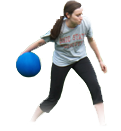
Fit Tip – Interval Training: Great for Fat Loss
Many people mistakenly believe the best way to lose weight through exercise is to train at a very slow pace for a long time. This notion came from Scandinavian studies conducted in the 1960s that showed that the body used more fat when exercising very slowly than when training more intensely. Some people interpreted these results to mean that low-intensity exercise is better for losing fat.
This notion is nonsense! You lose fat by burning more calories than you take in. You will burn many more calories training intensely than exercising slowly. The body does not metabolize fats by themselves. Rather, fat use is integrated with carbohydrate and protein metabolism. Even if you used more fat during exercise, fuel storage balances itself out according to energy balance — calories in versus calories out. Intense exercise causes you to burn more calories and fat after the exercise is over. So, when trying to lose fat, work harder and burn more calories.
What is Interval Training?
If you’re exercising to lose weight, adding interval training to your program will help you burn more calories. Interval training refers to bouts of higher intensity exercise interspersed with periods of lower intensity exercise or rest. Let’s say your current workout is a steady 45-minute spinning class in which you’re working at about 70 to 85 percent of maximum heart rate. If you introduce short periods of higher intensity sprints (at 80 to 100 percent of max) into the ride, you’ll do more work and burn more calories in the same amount of time. Also, you’ll rev up your metabolism so you continue burning calories even after you stop exercising. You can use interval training for all of your favorite aerobic exercises, including ground or treadmill running, stair climbers, elliptical trainers, swimming, or cycling.
Interval training also builds muscle power that will carry over to your fitness and body-shaping program. The strong, shapely muscles you build doing intervals will make it easier to do leg exercises such as lunges and squats and give you greater stamina that will help you better cope with your busy schedule. Intervals will also develop sleek, attractive lower body muscles faster and better than almost any other exercise.
Intervals can be a real time-saver, too. You know you need to run, work on the elliptical trainer, or ride a bike to cut fat, but you just can’t face the boredom of slogging along on the roads or looking at a blank wall for a half-hour— or, you just don’t have the time. Interval training not only makes you run faster, but also enhances cell enzymes that improve fuel use at rest and during exercise. Previously, scientists thought you needed to run for 45 minutes or more per workout to get these cellular effects. If you train intensely in short bouts, you can get more benefits in less time. An added benefit is that interval training turns up your metabolic furnace so you continue to burn more calories than normal all day long.
Components and Results
Interval training involves performing repeated exercises at set distances or times. This type of training helps the body move at faster speeds by training the nervous system to react more quickly, increasing the heart’s ability to pump blood, and help the cells cope with rapid metabolism.
You can use interval training techniques for almost any type of exercise and even sports skills. For example, a middle distance runner might do repeated bouts of 400-meter runs at 90-100 percent of her maximum effort. A tennis player might practice volleys against the wall for 30 seconds, followed by 30 seconds of rest. The swimmer might swim 100 meters at 90 percent effort for 15 repetitions with three minutes rest between. The sport or exercise you select is unimportant as long as you burn calories rapidly.
The four components of interval training are distance, repetitions, intensity and rest. Distance refers to either the distance or time of the exercise interval. Repetition is the number of times the exercise is repeated. Intensity is the speed of the exercise. Rest is time between exercises.
Each factor of interval training is related to the others. When you train more intensely, you will do fewer repetitions and rest longer. For example, a runner performing 400-meter runs at 100 percent of her maximum running speed might only manage four to six repetitions. A person working at only 75 percent of maximum intensity might manage eight to 15 repetitions.
Don’t practice interval training more than three days per week. Intervals are exhausting and can easily lead to injury. Let your body tell you how many days you can tolerate. If you are overtired doing three days per week, cut back to one or two days. Also, if you feel good, try increasing the intensity or volume and see what happens. Begin slowly and progress conservatively. Integrate interval training into your total exercise program. You shouldn’t be so tired from doing intervals that you can’t function during the day, or do other parts of your exercise and shaping program.
By Thomas Fahey, EdD
2008 Fitness Rx Magazine
Healthy Regards




